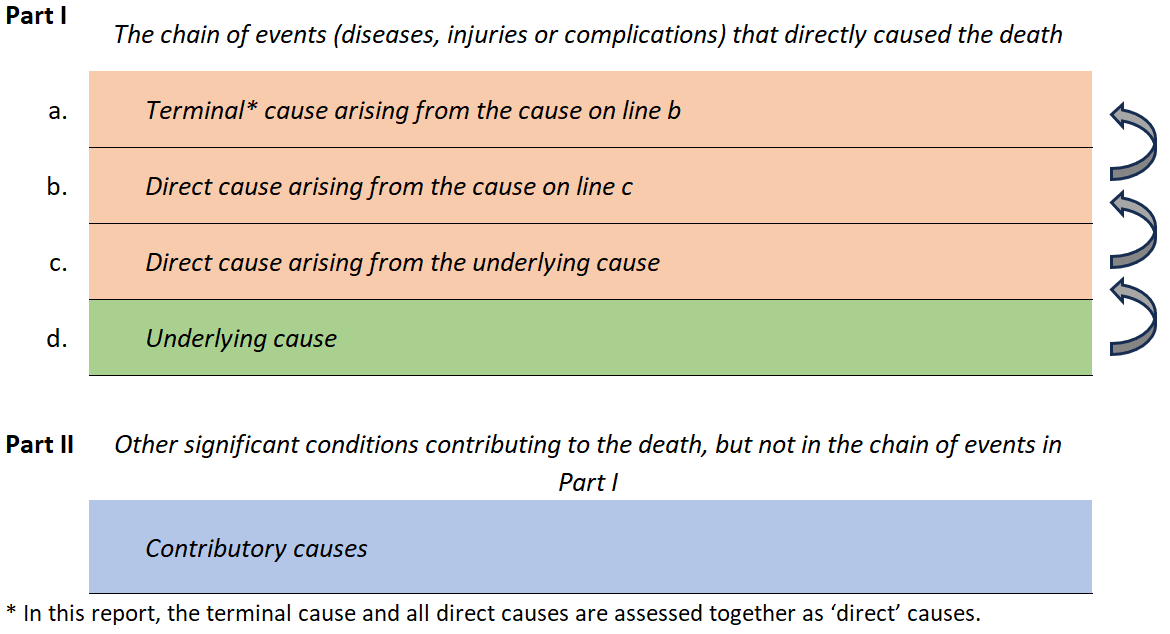Deaths data
Information about deaths is collected on death certificates and certified by either a medical practitioner or a coroner. Registration of deaths is compulsory in Australia and is the responsibility of each state and territory Registrar of Births, Deaths and Marriages (RBDM) under jurisdiction-specific legislation. Additional information about coroner-certified deaths is maintained by the National Coronial Information System (NCIS). On behalf these agencies (RBDM & NCIS), deaths data are assembled, coded and published by the Australian Bureau of Statistics. Causes of death are coded by the ABS to the International Statistical Classification of Diseases and Related Health Problems 10th Revision (ICD-10). The Australian Coordinating Registry undertakes the coordination and management of the data on behalf of the RBDMs, and supplies the AIHW with the Cause of Death Unit Record File. The data are maintained by the AIHW in the National Mortality Database (NMD).
For more information about Australian mortality data, including scope and coverage of the collection and a quality declaration, please refer to Deaths, Australia and Causes of death, Australia available from the ABS website.
The data used in this report was extracted from the NMD. The NMD comprises two sets of causes:
- record data – which has causes of death that have been coded to an ICD-10 code based on the standard international coding rules. These data contain the underlying cause and the associated causes (that is, all conditions that were not the underlying cause).
- entity data – which has the causes of death in the order and location that they were recorded on the medical death certificate. These data contain information about the location (Part I or Part II) on the medical death certificate (see Figure below). The location of the cause can be used to identify whether the cause was in the chain of events leading directly to death (Part I) or whether it was a cause that significantly contributed to the death (Part II).
Figure: Cause types assessed in this report based on the international format of the medical certificate of cause of death

Identifying the cause type for each condition involved in death
For this report, we extracted the underlying cause of death from the record data. That is, we used the cause which was designated as the underlying cause based on the standard international coding rules.
We used the entity data to identify causes in Part I and assigned these as ‘direct’ causes and causes in Part II assigned as ‘contributory’ causes.
Mapping deaths data to the cause
For this report, the ICD-10 codes from the data extracted from the NMD were mapped to the relevant cause in the cause list.
As a result of combining the underlying cause from the record data and the causes in Part I and Part II from the entity data, there can be some duplication of causes in each death record. With each cause assigned to a specific cause in the cause list, each death was assessed for duplicate mentions of causes. That is, if two causes on the same death record aligned to the same cause in the cause list, only one instance of the cause was included in the analysis of multiple causes. To avoid double counting causes within each death, the duplicate mentions of causes were excluded from the analysis.


